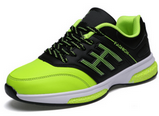TPEs
Elastomers TPE > TPE-S
What is the TPEs? Styrenic block copolymers (TPS or TPE-S) The first commercial thermoplastic elastomers SBC (styrene-butadiene block copolymer) that derived their properties from an ABA block copolymer structure were triblock poly (styrene-isoprene-styrene) (SIS) and poly (styrene-butadiene-styrene) (SBS) introduced in the mid-1960s. Initial applications were in molded shoe soles, hot melt adhesives and injection molded rubber products. To further expand the range of applications, these polymers became more stable by hydrogenation of the middle diene block in the early 1970s. The completely hydrogenated styrene blocks showed poor resistance to oils, which led to the introduction of polymers with selectively hydrogenated rubber blocks. Through selective hydrogenation, SBS was converted to styrene (ethylene-butylene) -styrene (SEBS) and SIS was converted to styrene (ethylene-propylene) -styrene (SEPS). In the 1970s, a wide range of triblock, diblock and star architectures were introduced with styrene contents ranging from 10% to more than 70%. Members of this broad family of polymers containing more than 50% rubber blocks are generically known as styrenic thermoplastic elastomers while members of this broad family of polymers containing more than 50% styrene are known generically as styrenic SBC thermoplastics ( Styrene-butadiene block copolymer) and it is not an elastomer. Thermoplastic elastomers such as TPE's are compounds based on SBS, SIS, SEP, SEEPS or SEBS, in their chemical version styrene is present. The styrene end blocks provide the thermoplastic properties and the intermediate blocks of butadiene provide the elastomeric properties. Polystyrene is a tough hard plastic, and this gives SBS its durability. The polybutadiene is rubbery, and this provides it with soft touch characteristics of the SBS. In addition, polystyrene chains tend to cluster. When one styrene group of one SBS molecule binds to one group, and the other polystyrene chain of the same SBS molecule joins another group, the different groups join with gummy polybutadiene chains. This gives the material the ability to retain its shape after being stretched. SEBS is a block copolymer of styrene base, in which the elastomeric phase is modified by hydrogenation. The hydrogenation of an SBS rubber leads to the formation of an elastomeric segment in which the alternative ethylene units with the units of which butyleneiche name SEBS. Thanks to the absence of the double bond, SEBS, have an excellent resistance to oxidation and can be added with plasticizers and fillers. SBS is the highest volume material produced by TPS and is commonly used in footwear, adhesives and seals and lower specifications, where resistance to chemicals and aging are not critical. Because of their ability to mix with a wide variety of materials, SBCs are rarely used alone. In the applications described below, it is unusual for an SBC to represent more than 50% of a product. Due to their low polarity, SBCs have a relatively weak adhesion to other materials and a limited resistance to oil, and therefore are generally used in applications where polarity is not important or undesirable. The general strength of adhesion increases as the activation force for the phase separation between the blocks, χN, increases in the order SIS <SBS⪡ SEPS, SEBS, where N is the degree of polymerization and χ is the interaction parameter segmental as described in the Copolymer phase behavior block (We have degrees formulated to adhere to any polymer). |   | |
